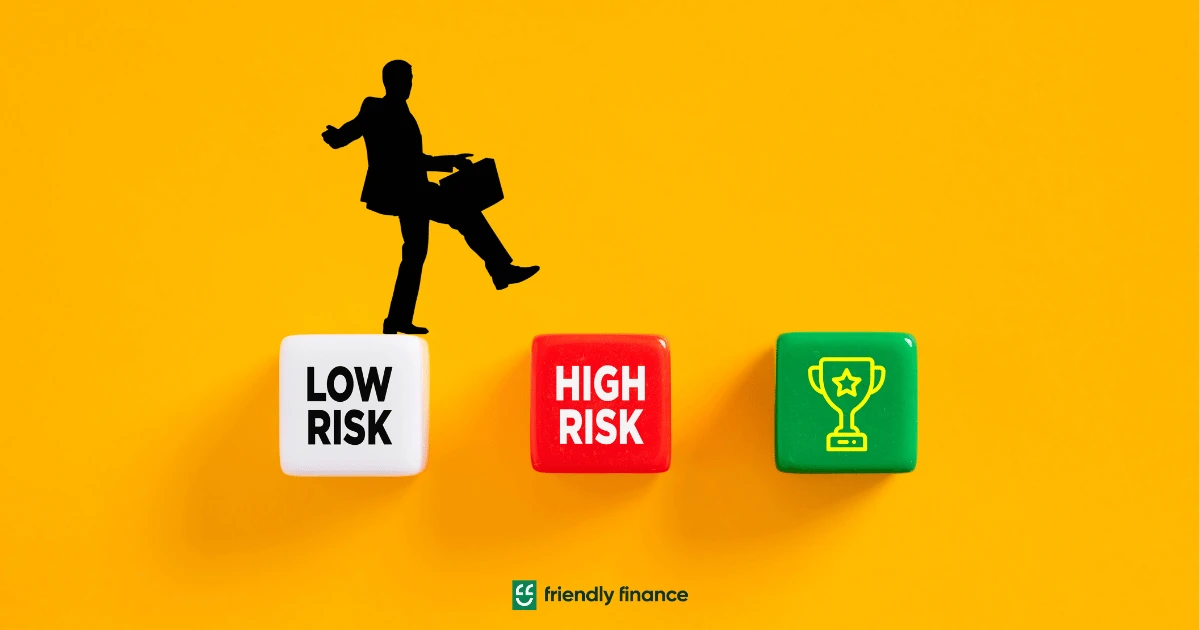Every financial decision involves a balance between risk and reward. Whether you’re considering investments, career changes, or even how you allocate your entertainment budget, understanding the potential risks and rewards can help you make smarter choices.
Here’s a guide to evaluating risk and reward in different areas of your financial life, with strategies to approach these decisions mindfully and keep your finances stable.
Define Your Risk Tolerance
Your personal tolerance for risk plays a significant role in financial decision-making. Risk tolerance can vary depending on factors like age, financial stability, long-term goals, and even personality. Younger individuals might have a higher risk tolerance due to longer investment horizons, while those approaching retirement might prefer safer, more stable options.
Understanding your comfort level with risk helps you make decisions that align with your financial goals and emotional well-being. If an investment or decision causes undue stress, it might exceed your acceptable risk level.
Distinguish Between High and Low-Risk Investments
Financial investments often come with varying levels of risk. High-risk investments, such as stocks, real estate, or venture capital, typically offer greater potential rewards but can be volatile. On the other hand, low-risk options like government bonds, savings accounts, or fixed deposits provide stable, though often lower, returns.
Balancing high- and low-risk investments is essential for a well-rounded portfolio. Diversifying across different types of investments can help minimise overall risk while still allowing for growth opportunities.
Consider the Potential Reward
With any financial decision, it’s crucial to consider the potential reward alongside the risk. Ask yourself, “What do I stand to gain?” and “What could I lose?” These questions apply to investments, business ventures, and even personal finance decisions like taking out a loan or making a large purchase.
Calculating the potential reward helps you weigh the benefits of the risk. If the potential gain is worth the risk based on your goals and financial standing, it may be a calculated risk worth taking. Conversely, if the reward is minimal compared to the possible downside, you may decide to pass.
Assess the Risk in Smaller Financial Decisions
Not all risks come from investments. Everyday financial choices, such as purchasing high-ticket items, signing up for a new credit card, or even choosing a vacation destination, carry elements of risk and reward. These smaller decisions may not have the same long-term impact as an investment, but they can still affect your budget and savings.
Consider whether these smaller expenses align with your financial goals. For example, while a lavish vacation might offer a rewarding experience, it may also set back your savings goals if not planned carefully. Approaching these decisions with the same mindset as larger financial choices can help you stay aligned with your priorities.
Recognise the Risks in Non-Traditional Financial Choices
In addition to traditional financial decisions, some people consider alternative avenues to generate extra income or excitement, such as collectibles, cryptocurrency, or, occasionally, games of chance. However, just as with any high-risk option, it’s crucial to approach such avenues with caution and set strict limits, as the outcomes are unpredictable.
Recognising the nature of these choices as entertainment rather than guaranteed financial gain can prevent risky spending from affecting your overall financial health.
Use a Risk-Reward Analysis Framework
For more significant financial decisions, a risk-reward analysis can be incredibly helpful. This approach involves listing potential risks and rewards to see if the latter outweighs the former. This framework is especially useful for high-stakes choices, such as taking out a large loan, purchasing property, or starting a business.
Start by outlining the benefits and potential positive outcomes, then make a list of possible downsides or worst-case scenarios. If the reward justifies the risk based on your financial goals and stability, it may be worth pursuing. Otherwise, it might be wiser to consider safer options.
Have a Contingency Plan
When taking any financial risk, always have a contingency plan in place. This could mean setting aside an emergency fund, securing insurance, or diversifying investments to reduce exposure to any one particular area. A contingency plan offers peace of mind and provides a safety net if things don’t go as planned.
For example, if you’re investing in stocks, a diversified portfolio can mitigate losses in case certain stocks underperform. Similarly, having a robust emergency fund can help if an investment or financial decision leads to unexpected losses.
Seek Professional Advice When Needed
For complex financial decisions, seeking guidance from a professional can be invaluable. Financial advisors, investment consultants, and accountants can provide insights into the potential risks and rewards associated with your choices. They can also help tailor strategies to fit your unique situation and goals, ensuring that your decisions are based on expert analysis rather than guesswork.
Working with a professional is particularly beneficial when exploring investments or financial ventures that are unfamiliar or high-risk. A professional perspective can help you make informed, balanced decisions.
Balancing risk and reward is an essential part of financial planning, helping you make decisions that support both your present and future goals. By assessing risk tolerance, considering potential rewards, and keeping a contingency plan in place, you can make informed choices that align with your financial goals and lifestyle.




